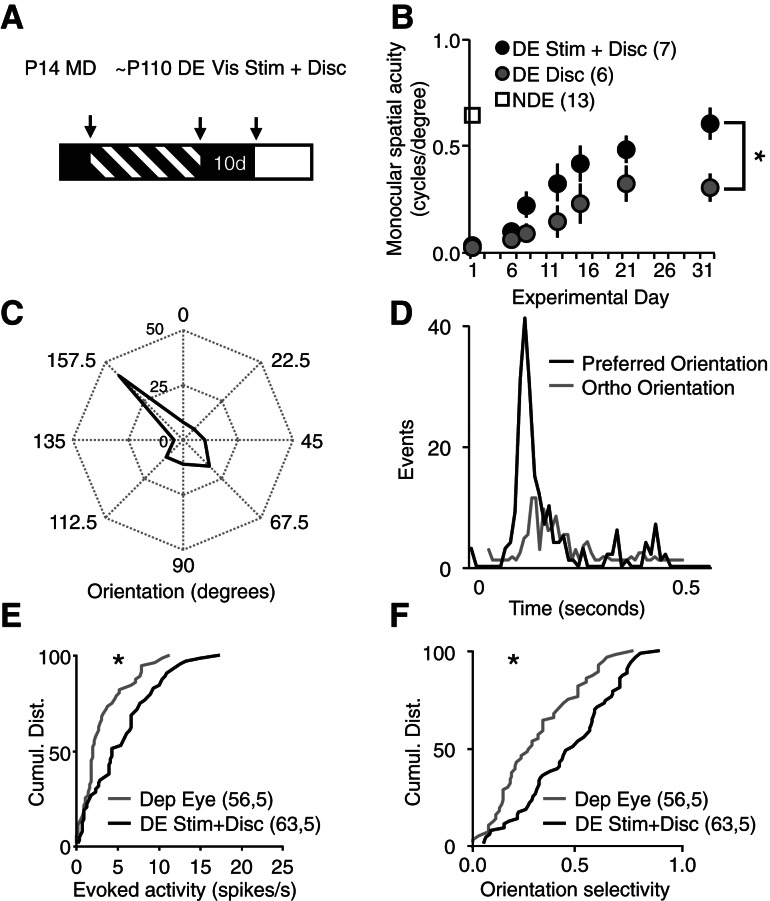Figure 4.
Passive visual stimulation improves the recovery of spatial acuity. (A) Experimental timeline: chronically deprived subjects were trained to perform a visual discrimination task with the nondeprived eye. Following assessment of nondeprived eye spatial acuity, subjects received dark exposure (DE at ∼P110), reverse deprivation, and began trials of active visual discriminations (Disc) with the chronically deprived eye. One cohort received passive visual stimulation prior to active visual discrimination (Vis Stim + Disc). (B) Passive visual stimulation followed by active visual discrimination enhances the recovery of spatial acuity (one-way ANOVA, F(2,25) = 5.6914, P = 0.010, Stim only [black] versus Stim + Disc [gray]; [*] P < 0.05, Tukey-Kramer HSD post hoc). (C) Polar plots of a representative layer IV neuron revealed an increase in the strength and orientation selectivity of visually evoked spiking output in the previously deprived eye. (D) Post-stimulus time histograms of spiking output of a representative layer IV neuron evoked by visual stimuli of preferred (black) and orthogonal (gray) orientations presented to previously deprived eye. (E) The cumulative distribution of single unit activity revealed a significant increase in the strength of visually evoked spiking output in the previously deprived eye (Dep Eye [gray] 56,5, DE Stim + Disc [black]) 63,5, KS test, P = 0.029, n = units, subjects). (F) The cumulative distribution of single unit activity reveals a significant increase in the orientation selectivity of neuronal spiking output in the previously deprived eye (DE [gray]) vs. DE Stim + Disc [black]), KS test, P = 0.007, n = units, subjects).

